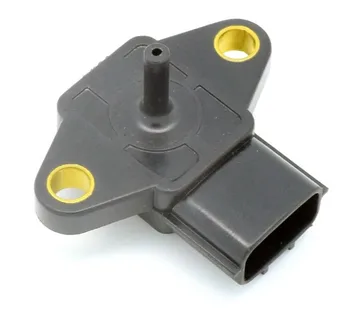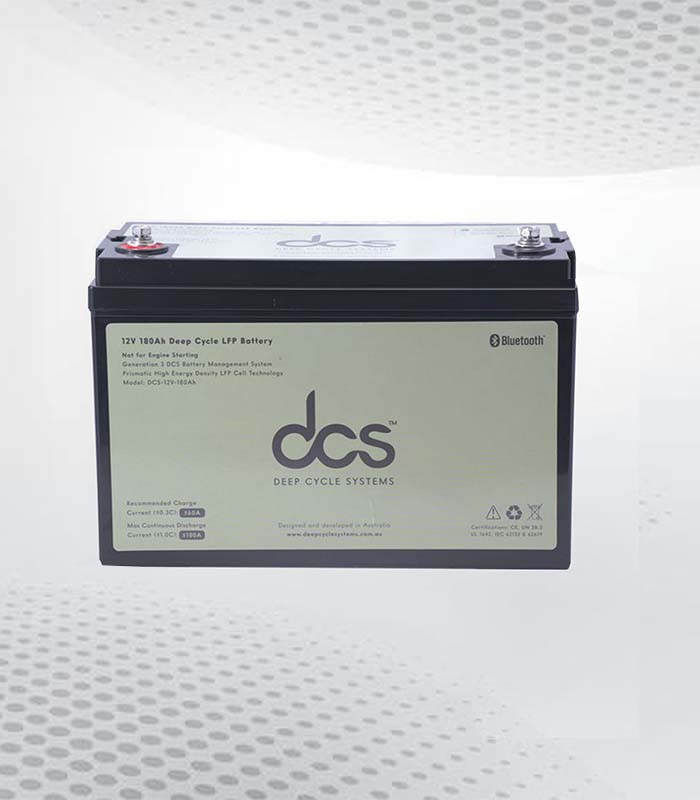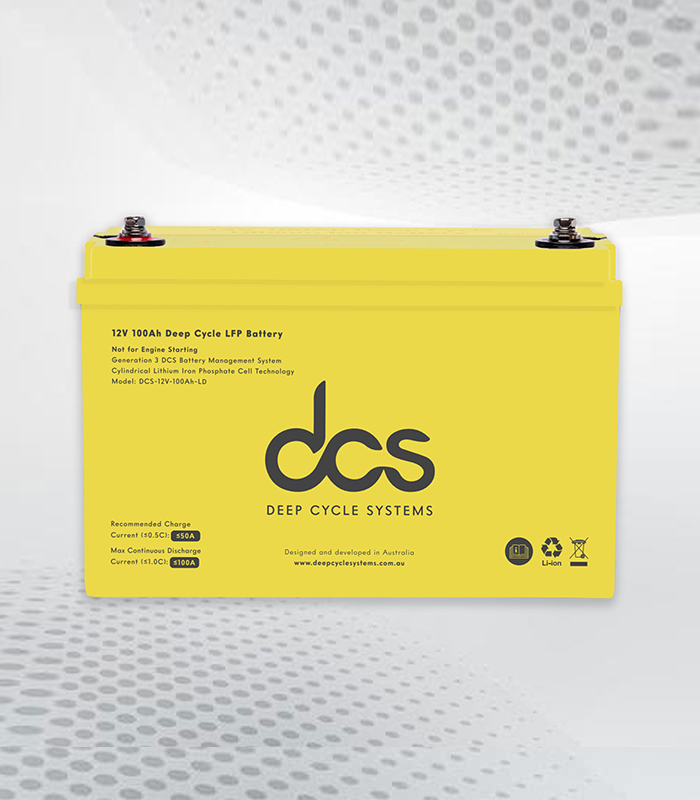Imagine a world where energy independence is not just a dream but a reality. As the push for renewable resources intensifies, solar power has emerged as a leading solution for sustainable living. Integrating solar energy with Off Grid Battery System allows individuals and families to harness the sun’s power while ensuring their homes remain powered even in remote locations. This guide explores essential steps, best practices, and expert tips for seamlessly combining solar panels with an off-grid battery system, making it possible to enjoy clean energy around the clock.
Assess Your Energy Needs
Understanding energy requirements is crucial in transitioning to an off-grid battery system. Begin by evaluating daily consumption habits. This involves identifying all appliances and devices powered by your solar setup. Consider both essential and non-essential items. Essential needs might include lighting, refrigeration, and heating, while entertainment systems or additional gadgets fall into the non-essential category.
Next, calculate the wattage for each device. This information helps determine total energy usage over 24 hours. For accuracy, track usage patterns throughout different seasons; some months may demand more power than others. Remember, future growth! Anticipate any changes in lifestyle or additions to family members that could increase energy demands down the line. A comprehensive assessment ensures that your solar power system can efficiently meet current and future needs.
Choose the Right Solar Panels
Choosing the right solar panels is crucial for optimising energy efficiency and ensuring long-term savings. With various types and brands available, making an informed decision can significantly impact your home’s energy performance. Here’s a concise guide to help you select the best solar panels for your needs:
Understand Your Energy Needs
Before selecting solar panels, evaluate your household’s energy consumption. Look at your electricity bills to determine how much power you need to generate. This assessment will help you choose panels that meet your energy requirements efficiently.
Compare Solar Panel Types
Solar panels come in different types: monocrystalline, polycrystalline, and thin-film. Monocrystalline panels are known for their high efficiency and longevity but can be more expensive. Polycrystalline panels offer a balance between cost and efficiency. Thin-film panels are lightweight and flexible but generally less efficient, making them suitable for specific applications.
Check Efficiency Ratings
Efficiency ratings indicate how well a solar panel converts sunlight into electricity. Higher efficiency panels can generate more power in limited space, which is beneficial if you have a small roof area. Compare the efficiency ratings of different panels to find one that suits your space and energy needs.
Consider Warranty and Lifespan
Solar panels typically have warranties of 10 to 25 years. A more extended warranty often reflects better quality and durability. Check the warranty details and lifespan of the panels to ensure they will perform well over time and provide you with long-term reliability.
Evaluate Cost vs. Long-Term Savings
While cost is essential, consider the long-term savings on your energy bills. More significant savings over time may offset higher upfront costs for more efficient panels. Balance your initial investment with the potential for reduced energy expenses.
By carefully considering these factors, you can select the right solar panels that offer optimal performance and value for your investment.
Select Compatible Off-Grid Batteries
Choosing the correct off-grid battery is crucial for maximising solar energy storage. Different types of batteries offer unique advantages, so understanding these options is critical. Lead-acid batteries are often favoured for their affordability and reliability. They come in two varieties: flooded and sealed. Flooded batteries require maintenance, while sealed ones are more convenient but costlier.
Lithium-ion batteries have gained popularity due to their longer lifespan and faster charging capabilities. Although they present a higher upfront investment, many users find the efficiency worth it over time. Compatibility with the solar power system matters, too. Ensure that the chosen battery matches the voltage requirements of both panels and inverters. Additionally, depth of discharge (DoD) ratings should be considered to understand how much usable energy can be drawn from each type without damaging them. Selecting compatible off-grid batteries enhances performance and ensures sustainable energy use for years ahead.
Design Your Solar Power System Layout
Designing a solar power system layout is crucial for optimal energy generation. A well-thought-out plan ensures that every component works harmoniously. Begin by assessing available space. Roof-mounted systems require different considerations than ground-mounted ones. Orientation and tilt angle play vital roles in maximising sunlight exposure.
Next, position the solar panels to minimise shading from trees or other structures throughout the day. This will help enhance efficiency and output. Consider cable runs when planning your layout. Shorter distances between components can reduce energy loss and improve performance. Include safe access pathways for maintenance purposes. Easy access helps ensure long-term functionality without hassle. Visualise the entire setup before installation begins, using software tools if necessary. An organised plan leads to effective execution and fewer surprises during installation.
How off Grid Batteries for Solar Work with Charge Controllers and Inverters
Off Grid Batteries for Solar play a crucial role in solar power systems? They store excess energy generated by solar panels for later use, ensuring a reliable power supply when sunlight isn’t available. Charge controllers manage the flow of electricity between the solar panels and batteries. They regulate voltage and prevent overcharging, which can damage battery life. Charge controllers ensure that stored energy is utilised efficiently by optimising this connection.
Inverters are essential, too; they convert DC (direct current) from batteries into AC (alternating current), making them usable for household appliances. The inverter’s capacity should match the total load to avoid performance issues. These components create an effective off-grid battery system that maximises energy production and storage. This synergy enables homes and businesses to rely on renewable sources without compromising power availability or efficiency.
Install Solar Panels and Battery Storage
As energy costs rise and environmental concerns grow, many homeowners are turning to solar panels and battery storage to enhance their energy efficiency. By harnessing the sun’s power and storing it for later use, you can reduce your dependence on the grid and lower your utility bills. Here’s a guide on how to get started with installing solar panels and battery storage.
Choosing the Right Solar Panels
The first step in the installation process is selecting the right solar panels for your needs. Consider factors such as the panels’ efficiency, durability, and warranty. High-efficiency panels may have a higher upfront cost but can provide better long-term savings.
Assessing Battery Storage Options
Once you’ve chosen your solar panels, it’s time to think about battery storage. Batteries store the excess energy your solar panels generate for use when the sun isn’t shining. Look for batteries with a high storage capacity and long lifespan. Popular options include lithium-ion batteries, known for their efficiency and longevity.
Installation Process
Professional installation is crucial to ensuring that your solar panels and battery storage systems are set up correctly. A certified installer will assess your property, recommend the best setup, and ensure that everything is compliant with local regulations.
Maintenance and Monitoring
After installation, regular maintenance and monitoring are essential to keep your system running efficiently. This includes cleaning the panels and checking the battery storage levels to ensure optimal performance.
By investing in solar panels and battery storage, you can enjoy significant savings on your energy bills while contributing to a more sustainable future.
Connect the Charge Controller and Inverter
Connecting the charge controller and inverter is crucial for an efficient off-grid battery system. This process ensures that energy generated from solar panels is effectively managed and utilised. Start by locating the output terminals on your charge controller. These will typically connect to the battery bank. Ensure all components are powered down before connecting to avoid short circuits.
Next, find the input terminals on your inverter. The connection between the batteries and this inverter input should be made, allowing stored energy to power household appliances or devices when needed. It’s essential to use appropriate gauge wiring for these connections, as it helps minimise voltage drop and enhance performance. Secure all connections tightly; loose wires can lead to inefficiency or damage over time. Once everything is connected correctly, turn on both devices gradually while closely monitoring their operation for optimal performance.
Configure Battery Management Systems
Configuring battery management systems is crucial in optimising an off-grid battery system. These systems monitor and manage battery performance to ensure longevity and efficiency.First, it’s essential to set parameters for charging and discharging cycles. This helps prevent overcharging or deep discharging, which can harm battery life.
Next, consider integrating temperature sensors. Batteries operate best within specific temperature ranges. Monitoring these conditions allows for adjustments that enhance performance. Implementing alerts for low voltage levels is another crucial aspect. Early warnings enable proactive measures before problems escalate. Regular firmware updates on management systems can improve functionality and security. Keeping the software current maximises compatibility with new technologies while enhancing overall system reliability.
Test and Monitor the Performance of the Best Batteries for Off Grid Solar Power
Testing and monitoring the performance of Best Batteries for off Grid Solar Power system is crucial for long-term reliability. Regular checks ensure that everything operates at peak efficiency. Start by measuring voltage levels and state of charge (SOC). This data helps identify if the battery is underperforming or nearing depletion.
Next, consider using a battery management system (BMS). It provides real-time insights into temperature, health status, and capacity metrics. Monitoring these parameters can prevent critical failures. Solar charge controllers also play a significant role in managing energy flow. They optimise charging cycles, which extends battery life. Daily performance logs can help track trends over time. Analysing this information allows adjustments to be made for better energy balance and utilisation. Investing time in testing will pay off with increased durability and dependable power supply when it matters most.
Implement Energy Efficiency Measures
Implementing energy efficiency measures can significantly enhance the performance of an off-grid battery system. Simple adjustments around the home or workspace can lead to substantial energy savings. Start by replacing incandescent bulbs with LED lighting. LEDs consume less power and have a longer lifespan, making them an intelligent choice for sustainability.
Seal windows and doors to minimise drafts. Proper insulation keeps indoor temperatures stable, reducing reliance on heating or cooling systems powered by solar energy. Consider investing in Energy Star-rated appliances. These devices are designed to use less electricity while maintaining high functionality. Smart usage habits also play a vital role. Switching off lights when not needed, using timers for outdoor lighting, and running appliances during peak sunlight all contribute to better energy management. Encouraging family members or coworkers to embrace these practices fosters a culture of conservation that effectively complements any off-grid battery setup.
Maintain and Upgrade Your System
Regular maintenance of an off-grid battery system is crucial for optimal performance. Periodically check battery terminals for corrosion and ensure all connections are tight. Cleanliness can significantly extend the life of batteries. Monitoring the state of charge (SOC) helps understand how well the system operates. A reliable monitoring tool allows users to track energy consumption and charging cycles effectively.
Upgrading solar panels, batteries, or charge controllers can yield higher efficiency. As technology advances, newer models often offer improved features that enhance functionality. Consider integrating smart home systems to automate energy management. Smart devices can optimise power usage based on real-time data, ensuring that energy supply meets demand seamlessly. Investing time in regular assessments will pave the way for long-term sustainability. Keeping abreast of advancements in renewable energy technologies fosters informed decisions about necessary upgrades as needs evolve.
Conclusion
Integrating solar power with an Off Grid Battery System presents a sustainable solution for energy independence. It empowers individuals to harness renewable resources while reducing reliance on traditional power grids. Understanding the dynamics of energy needs, panel selection, and battery compatibility is essential. Each component plays a crucial role in ensuring efficiency and reliability. Continuous monitoring and maintenance enhance system performance. Regular upgrades can optimise energy use, adapting to changing requirements over time. This journey supports personal energy goals and contributes positively to the environment. Embracing these technologies fosters a future where clean energy is accessible for all.
FAQS
What is an Off Grid Battery System?
An Off Grid Battery System stores energy generated from solar panels for later use. It allows users to maintain electrical power when the sun isn’t shining or during peak demand.
How do I assess my energy needs?
Calculating energy consumption involves reviewing monthly electric bills, identifying appliances, and determining wattage usage. A clear understanding of daily requirements ensures proper sizing of both solar panels and batteries.
Which solar panels are best for an off-grid setup?
It is crucial to choose high-efficiency monocrystalline or polycrystalline panels. Factors like space availability, budget constraints, and local weather conditions also significantly affect selection.
What types of batteries are compatible with off-grid systems?
Lithium-ion batteries tend to offer higher efficiency and longer lifespans than lead-acid options. When selecting storage solutions, it’s vital to consider capacity, depth of discharge (DoD), and charging cycles.
How does a charge controller work within the system?
Charge controllers regulate voltage and current flowing into the batteries from the solar panels. They prevent overcharging while optimising performance based on environmental conditions.
| Related Business Listings |
| Contact Directory |
| Local Business Profiles |




